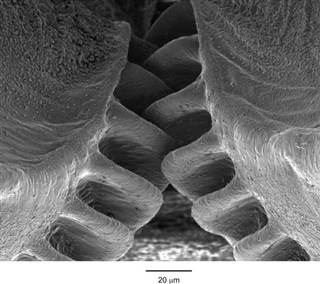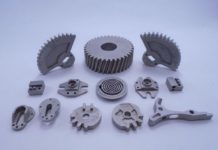Carlo Gorla –
Each cycle of lectures about gears worth mentioning, in the ambit of both a university and training course, can nothing but start with some introduction slides dedicated to the history of gear wheels. Human kind has been using gears for at least 5000 years, even if in rudimental way: the applications usually recalled are those of the Chinese cart that always points south, dating back to 2600 b.C., the odometer by Heron of Alexandria, to mention then examples of Greek or Roman age, the various machines by Leonardo up to arriving to our current time, passing through the industrial revolution.
Even if it is neither possible to date their invention precisely nor to identify an inventor, we have always taken for granted that it is a human invention.
You can then image the amazement in knowing -news dating back to last autumn – that two British researchers of the Cambridge University have discovered the existence of gears in nature!
More precisely, the two scientists discovered and documented through frames and shootings, that Issus coleoptratus, a tiny insect, at the nymph state shows two gear wheels at the articulation of its hind legs.

In the scientific publication, the authors explain that there are two mechanical architectures in jumper insects: the one of grasshopper and the one of fleas, in which hind legs are on two plans sideways the body, and the one of froghoppers and of planthoppers, which have instead two counter-rotating legs positioned under the body and approximately coplanar. The latter are the record holders of the high jump in the animal kingdom and the execution of record jumps is subordinate to the perfect synchronism of the motion of the two legs.
Well, in the nymph of Issus coleoptratus, the synchronization is achieved through the engagement between two toothed sectors, unlike other insects having the same configuration, in which we have only a rolling contact between two surfaces, according to the friction wheel principle, we would say. In virtue of this peculiarity, it can jump more than one meter-high, in other words, in due proportion, more than five hundred for a man.
In the article, the two authors describe in detail the “toothing data”, proposing also a comparison with “our” gears and, especially they document, trough measurements of the phase difference between the starting instant of the movement of each leg, that the performances achieved with the mechanical synchronization would not be attainable with the only potentialities of the nervous system.
Surprising, then, also the reason for the presence of such toothings: they have the function of making up to a limit of the neurological system, of electronics, we might say, unable to synchronize the motion of the two legs adequately!
In other words, this recalls to our mind the refined mechanics of certain machines, like the injection pumps of diesel engines or the complex kinematic chains just of our dear gear cutting machines, in which, on the contrary, these functions are by now increasingly replaced by electronics.
Concerning the history of gears, we can go on talking about invention, because there is no doubt that their origin is fully independent from the knowledge of this insect but in the future lectures of introduction to gear wheels, at least one slide about “gears in nature” will not miss, with Issus coleoptratus as protagonist.



